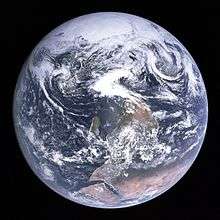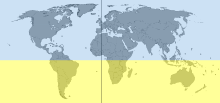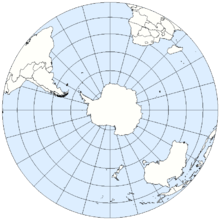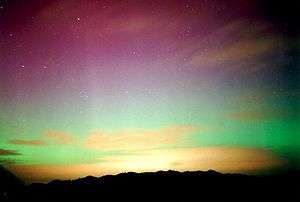Southern Hemisphere
Coordinates: 90°0′0″S 0°0′0″E / 90.00000°S 0.00000°E



The Southern Hemisphere is the half sphere of Earth which is south of the equator. It contains all or parts of five continents[1] (Antarctica, Australia, about 90% of South America, the southern third of Africa, and several southern islands off the continental mainland of Asia), four oceans (Indian, South Atlantic, Southern, and South Pacific) and most of the Pacific Islands in Oceania. Its surface is 80.9% water, compared with 60.7% water in the case of the Northern Hemisphere, and it contains 32.7% of Earth's land.[2]
Due to the tilt of Earth's rotation relative to the Sun and the ecliptic plane, summer is from December to March and winter is from June to September. September 22 or 23 is the vernal equinox and March 20 or 21 is the autumnal equinox. The South Pole is in the middle of the southern hemispherical region.
Characteristics
Southern Hemisphere climates tend to be slightly milder than those at similar latitudes in the Northern Hemisphere, except in the Antarctic which is colder than the Arctic. This is because the Southern Hemisphere has significantly more ocean and much less land; water heats up and cools down more slowly than land.


In the Southern Hemisphere the sun passes from east to west through the north, although north of the Tropic of Capricorn the mean sun can be directly overhead or due south at midday. The Sun rotating through the north causes an apparent right-left trajectory through the sky unlike the left-right motion of the Sun when seen from the Northern Hemisphere as it passes through the southern sky. Sun-cast shadows turn anticlockwise throughout the day and sundials have the hours increasing in the anticlockwise direction. During solar eclipses viewed from a point to the south of the Tropic of Capricorn, the Moon moves from left to right on the disc of the Sun (see, for example, photos with timings of the solar eclipse of November 13, 2012), while viewed from a point to the north of the Tropic of Cancer (i.e., in the Northern Hemisphere), the Moon moves from right to left during solar eclipses.
Cyclones and tropical storms spin clockwise in the Southern Hemisphere (as opposed to anticlockwise in the Northern Hemisphere) due to the Coriolis effect.[3]
The southern temperate zone, a subsection of the Southern Hemisphere, is nearly all oceanic. This zone includes all of Uruguay, Lesotho, Swaziland, and New Zealand; most of Chile, Argentina, South Africa, and Australia; and parts of Paraguay, Brazil, Namibia, Botswana, Mozambique, and Madagascar.
The Sagittarius constellation that includes the galactic centre is a southern constellation and this, combined with clearer skies, makes for excellent viewing of the night sky from the Southern Hemisphere with brighter and more numerous stars.
Forests in the Southern Hemisphere have special features which set them apart from those in the Northern Hemisphere. Both Chile and Australia share, for example, unique beech species or Nothofagus, and New Zealand has members of the closely related genera Lophozonia and Fuscospora. The eucalyptus is native to Australia but is now also planted in Southern Africa and Latin America for pulp production and, increasingly, biofuel uses.
Demographics
Approximately 800,000,000 humans live in the Southern Hemisphere representing only 10–12% of the total global human population of 7.3 billion, due to less land.[4][5]
List of continents and countries
Continents and microcontinents
- Africa (approximately one third, from south of Libreville in Gabon in the west to south of Somalia in the east)
- Antarctica
- Asia (the very southern island portion including East Timor, most of Indonesia and a few islets of the Maldives)
- Australia (the entire mainland is in the Southern Hemisphere)
- South America (mostly, south of the Amazon River mouth in the east and Quito in the west)
- Zealandia (New Caledonia, the New Zealand landmass and associated islands are wholly within the Southern Hemisphere)
Countries and territories
|
|
|
|
References
- ↑ "Hemisphere Map". WorldAtlas. Retrieved 13 June 2014.
- ↑ Life on Earth: A - G.. 1. ABC-CLIO. 2002. p. 528. ISBN 9781576072868. Retrieved 8 September 2016.
- ↑ "Surface Ocean Currents". National Oceanic and Atmospheric Administration. Retrieved 13 June 2014.
- ↑ "90% Of People Live In The Northern Hemisphere - Business Insider". Business Insider. 4 May 2012. Retrieved 10 November 2015.
- ↑ "GIC - Article". galegroup.com. Retrieved 10 November 2015.
See also
![]() Media related to Southern Hemisphere at Wikimedia Commons
Media related to Southern Hemisphere at Wikimedia Commons